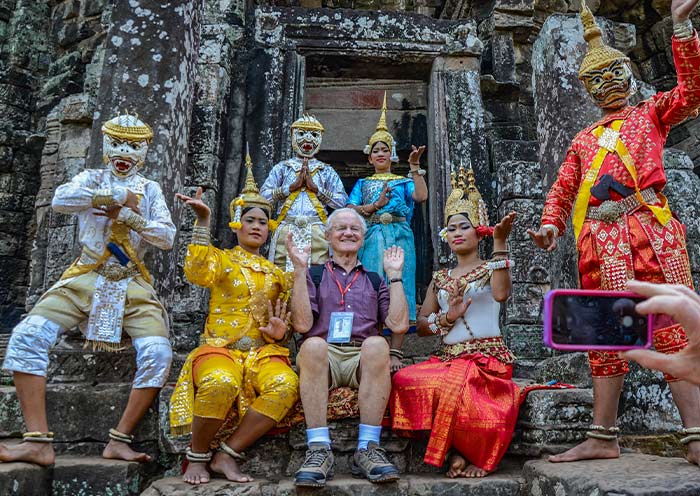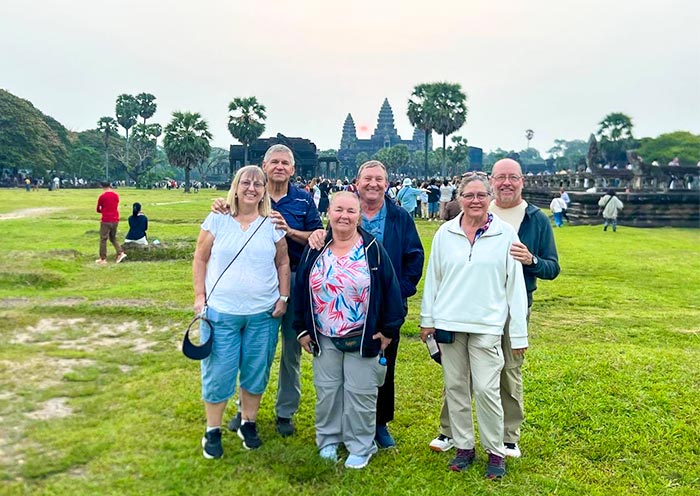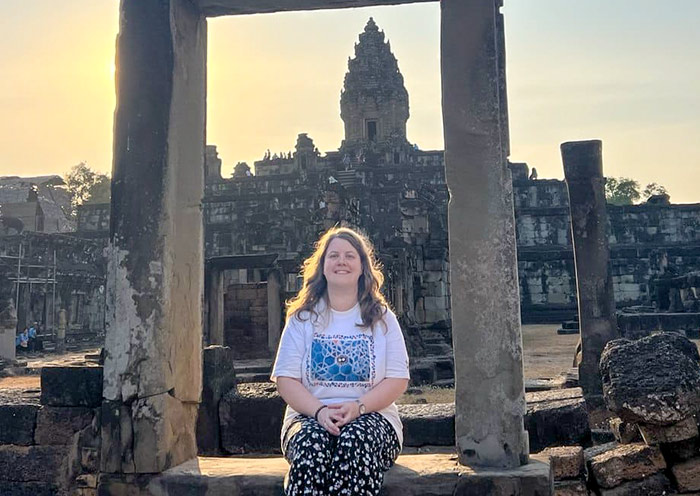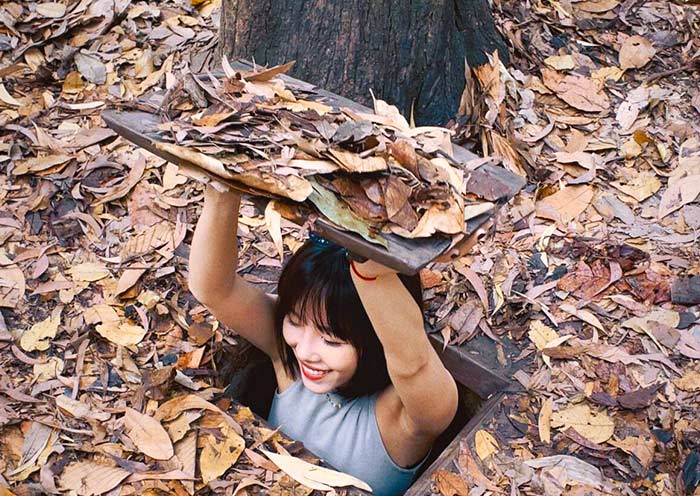Best Time of the Year to Visit Angkor Wat: Dry Season
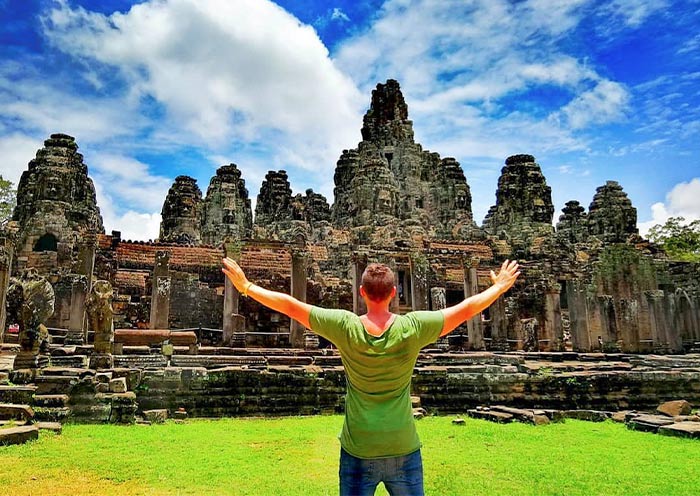
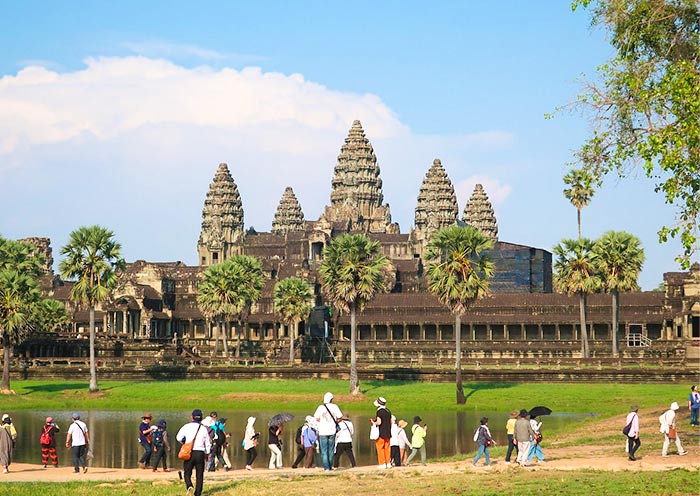
The best time to visit Angkor Wat, considering both weather and tourist crowds, is during the dry season, particularly from November to February. Here’s why:
1. Pleasant Climate: Cool and Cosy
During the dry season, the weather in Siem Reap, the gateway to Angkor Wat, is characterized by mild temperatures and lower humidity. It's the perfect time to explore the temple complex without being overwhelmed by heat or rainfall. The average temperatures range from 25 to 30 degrees Celsius (77 to 86 degrees Fahrenheit), making it comfortable for outdoor activities.
2. Clear Skies and Stunning Sunrises: Do not Miss Highlights
The dry season brings clear skies, allowing you to witness breathtaking sunrises over Angkor Wat. Watching the first rays of sunlight paint the temple's ancient structures with golden hues is an unforgettable experience. The clear weather also enhances the visibility, making it ideal for capturing stunning photographs of the temples against a backdrop of blue skies.
3. Access to Remote Temples: Keep the Road Accessible
The dry season ensures better accessibility to the more remote temples within the Angkor Archaeological Park (吴哥考古公园). Some of these temples, such as Banteay Srei (女王宫) and Beng Mealea (崩密列), might have limited access or muddy paths during the rainy season. Visiting during the dry season allows you to explore these lesser-known temples without any hindrances.
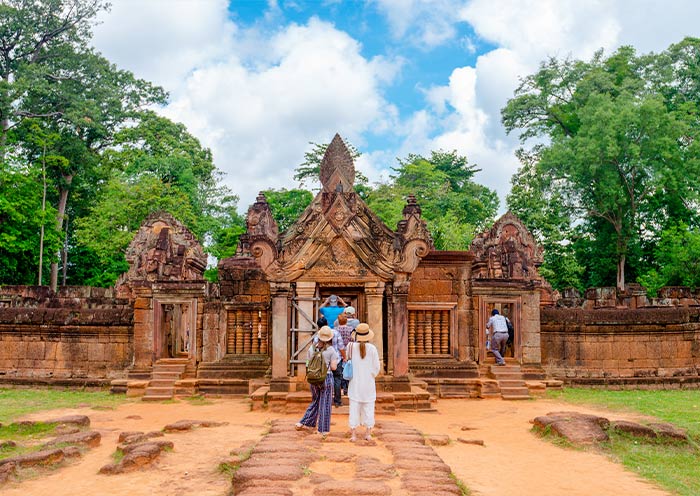

4. Festivals and Cultural Events: Unexpected Surprise
The dry season coincides with several colorful festivals in Cambodia, providing an opportunity to witness the country's vibrant culture. The most significant festival is the Khmer New Year, which takes place in mid-April. This festive period offers a chance to partake in traditional rituals, enjoy lively parades, and experience the joyful atmosphere throughout the region.
However, it's worth noting that the dry season is also the peak tourist season in Siem Reap. As a result, popular sites like Angkor Wat can get crowded, particularly during the peak travel months of December and January. To make the most of your visit, consider visiting Angkor Wat during the shoulder months of November or February when the crowds are slightly thinner. If you don't mind the occasional rain and prefer fewer crowds, the wet season can provide a unique experience with lush greenery and fewer tourists.
Best Time of the Day to Visit Angkor Wat: Sunrise & Sunset
The best time to visit the Angkor Archaeological Park in a day is from 5:00 am to 10:00 am in the morning and from 3:00 pm to 5:30 pm in the afternoon. If you wish to witness the sunset, it is recommended to head to Bakheng Temple around 6:00-7:00 pm. Here's why:
1. Breathtaking Sunrise: Early for the Wonderful Light
Angkor Wat at sunrise is an iconic and awe-inspiring sight. Watching the sun gradually rise behind the temple's silhouette, casting a warm golden glow on its ancient structures, is a truly magical experience. It's a moment that captures the timeless beauty and spiritual ambiance of the temple complex.
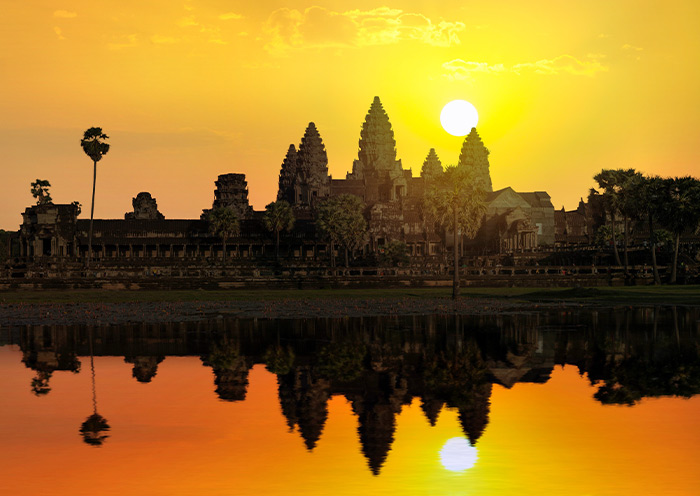

2. Cooler Temperatures: Enjoy the Mild Weather
During the early morning hours and late afternoon, temperatures are generally cooler compared to the midday heat. This makes exploring the temple complex more comfortable, especially if you plan on walking or climbing the steep steps of the temple structures.
3. Fewer Crowds:
Arriving early ensures that you can beat the crowds and have a more serene and intimate experience at Angkor Wat. As one of the most popular tourist attractions in Southeast Asia, Angkor Wat can become quite crowded during the day. By visiting at sunrise, you'll have the opportunity to explore the temple complex with fewer people around, enabling you to appreciate its beauty and tranquility in a more peaceful atmosphere.
4. Soft Lighting for Better Photography Opportunities:
The soft lighting during sunrise and late afternoon casts beautiful shadows on the intricate carvings and architectural details of Angkor Wat, and provides excellent lighting conditions for photography. The warm hues, gentle shadows, and the ethereal atmosphere add a special touch to your photographs. Capturing the intricate details and grandeur of Angkor Wat temples during this time of day can result in stunning shots that truly showcase its magnificence.
5. Breathtaking Sunset at Bakheng Temple
To end your day on a high note, head to Bakheng Temple to witness the sunset. Perched atop a hill, this temple offers panoramic views of the surrounding landscape. Watching the sun dip below the horizon, painting the sky with vibrant colors, and casting a warm glow over the temples is a spectacular sight and a perfect way to conclude your visit to Angkor Wat.

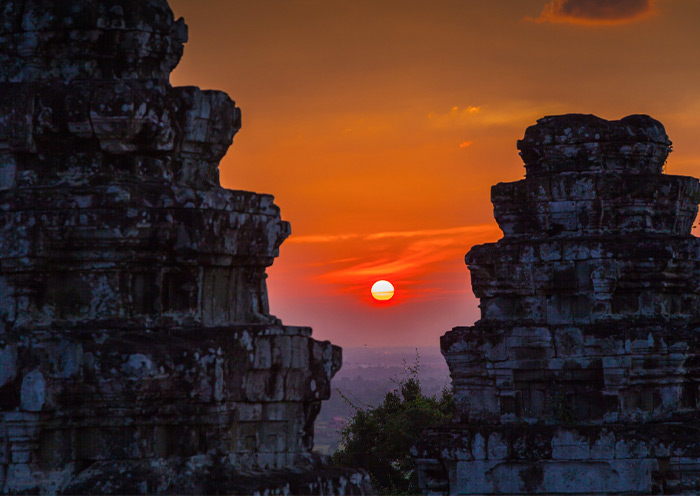
While sunrise and late afternoon are popular times to visit, you can still explore Angkor Wat throughout the day. Just be aware that midday hours can be hot and crowded, so it's advisable to take breaks, stay hydrated, and seek shade during that time.
Whether you choose to witness the captivating sunrise, enjoy the magical lighting during late afternoon, or explore during quieter hours, Angkor Wat's awe-inspiring beauty will leave a lasting impression on your visit.
Angkor Wat Weather Overview & Temperature by Month
| Month | Temperature °C (°F) | Weather | Clothing Recommendations |
|---|---|---|---|
| January | 20 - 30 (68 - 86) | Mild and Dry | Light breathable clothing, sunscreen, hat, sunglasses |
| February | 21 - 31 (70 - 88) | Mild and sunny | Light breathable clothing, sunscreen, hat, sunglasses |
| March | 23 - 35 (73 - 95) | Hot and Dry | Lightweight and loose-fitting clothing, sunscreen, hat, sunglasses, light scarf |
| April | 24 - 37 (75 - 98) | Hot and Dry | Lightweight and loose-fitting clothing, sunscreen, hat, sunglasses, light scarf |
| May | 24 - 35 (75 - 95) | Hot and humid | Lightweight and loose-fitting clothing, sunscreen, hat, sunglasses, light scarf, umbrella or rain jacket |
| June | 24 - 33 (75 - 92) | Hot, Rainy and humid | Lightweight and loose-fitting clothing, sunscreen, hat, sunglasses, light scarf, umbrella or rain jacket |
| July | 24 - 32 (75 - 90) | Hot, Rainy and humid | Lightweight and loose-fitting clothing, sunscreen, hat, sunglasses, light scarf, umbrella or rain jacket |
| August | 23 - 32 (73 - 89) | Hot, Rainy and humid | Lightweight and loose-fitting clothing, sunscreen, hat, sunglasses, light scarf, umbrella or rain jacket |
| September | 22 - 31 (71 - 88) | Hot, Rainy and humid | Lightweight and loose-fitting clothing, sunscreen, hat, sunglasses, light scarf, umbrella or rain jacket |
| October | 22 - 31 (71 - 88) | Hot and humid | Lightweight and loose-fitting clothing, sunscreen, hat, sunglasses, light scarf |
| November | 20 - 30 (68 - 86) | Mild and Dry | Light breathable clothing, sunscreen, hat, sunglasses |
| December | 20 - 30 (68 - 86) | Mild and Dry | Light breathable clothing, sunscreen, hat, sunglasses |
Angkor Wat Weather Overview
The weather in Angkor Wat can generally be described as hot and tropical throughout the year. Here's an overview of the weather in Angkor Wat:
Rainfall:
Angkor Wat experiences distinct wet and dry seasons. The wet season typically lasts from May to October, with the peak of rainfall occurring between June and September. During this period, the region receives substantial rainfall, often in the form of afternoon showers or heavy downpours. The wet season brings lush vegetation and can create a unique atmosphere for exploring the temples. However, it's worth noting that some areas may become muddy or flooded, and certain temples might be inaccessible during heavy rain.
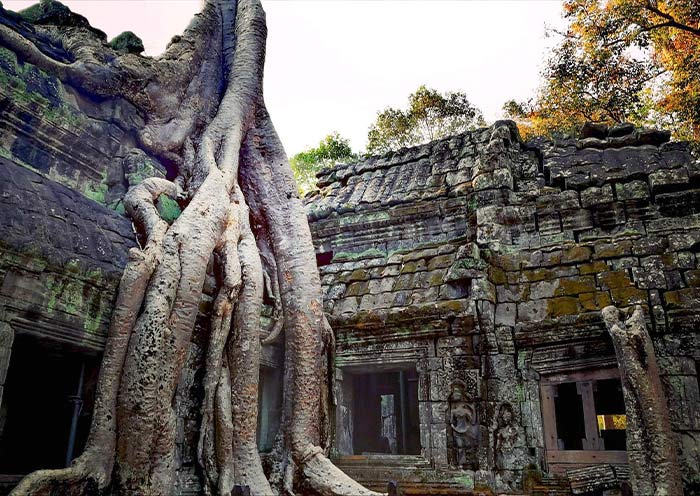
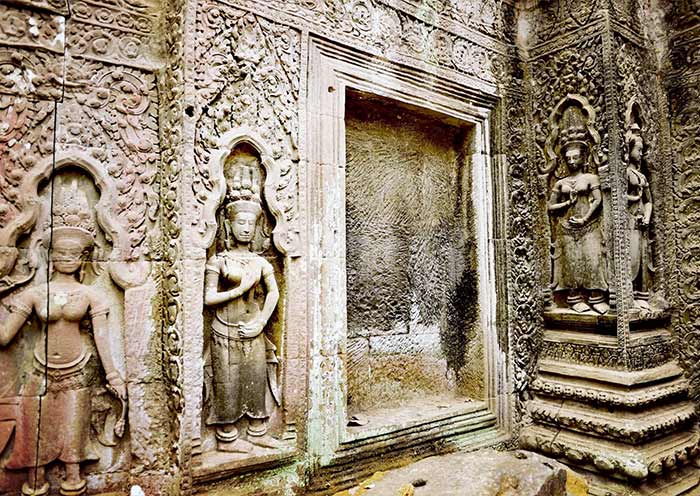
Temperature:
Angkor Wat has a tropical climate, characterized by high temperatures throughout the year. The average temperature ranges from 25°C to 35°C (77°F to 95°F). The hottest months are April and May, with temperatures often exceeding 35°C (95°F). It's advisable to wear lightweight and breathable clothing, use sunscreen, and stay hydrated when visiting Angkor Wat to cope with the hot weather.
Humidity:
The region experiences high humidity levels, particularly during the wet season. Humidity can reach around 80-90%, making the air feel heavy and sticky. The dry season, from November to April, offers relatively lower humidity levels, but it can still be humid compared to some other regions. It's recommended to carry a bottle of water and use appropriate clothing to stay comfortable in the humid conditions.
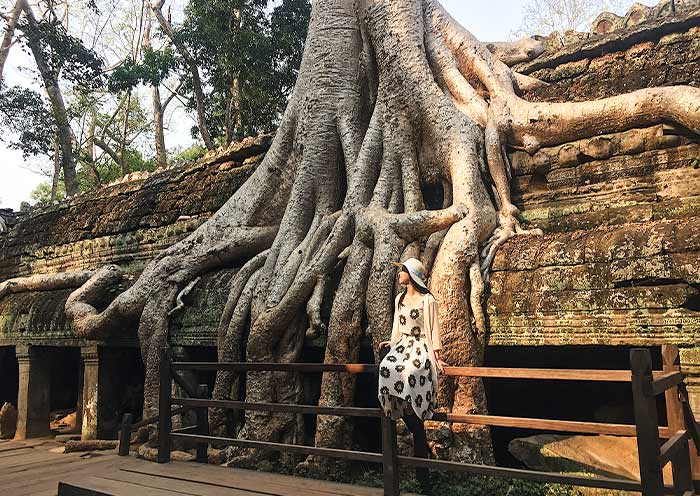
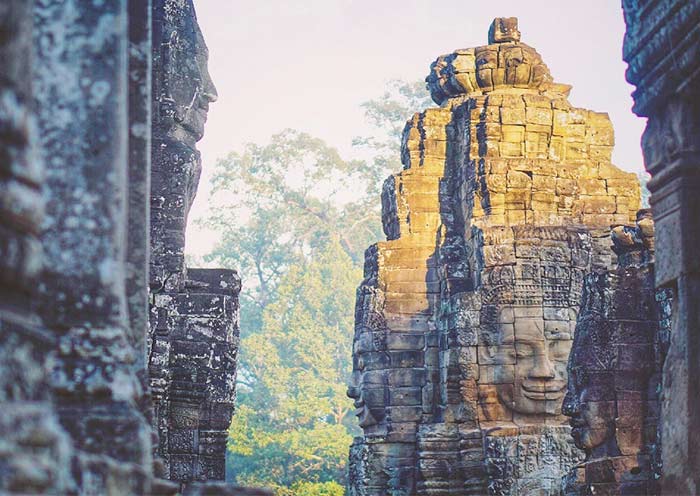
Peak Season in Angkor Wat - Dry Season from November to April
Weather and Temperature
- November to February: This period experiences cooler temperatures, with average highs around 28-30°C (82-86°F) and lower humidity. Nights can be cooler, averaging around 20°C (68°F). It's generally considered the peak tourist season due to the pleasant weather.
- March to April: Temperatures start to rise, with average highs ranging from 32-35°C (90-95°F). It becomes increasingly hot and humid, and the latter part of this season may experience occasional showers.
Clothing Recommendation
- November to February: Light and breathable clothing is recommended during the day, along with a light jacket for the cooler evenings. Long pants or skirts and modest clothing are appropriate for temple visits. It's also advisable to bring a hat, sunglasses, and sunscreen for sun protection.
- March to April: Lightweight and loose-fitting clothing made of breathable fabrics like cotton or linen is essential to stay comfortable in the heat. Wearing a hat, sunglasses, and sunscreen is crucial to protect yourself from the strong sun. It's also advisable to carry a small umbrella or raincoat in case of occasional showers.
Essential Travel Tips
- Plan your visit to popular temples like Angkor Wat and Bayon during the early morning hours to avoid the peak crowds and enjoy a more tranquil experience.
- Carry a reusable water bottle and stay hydrated throughout the day. The hot weather can be dehydrating, so drinking plenty of water is essential.
- Start your temple exploration early in the morning to take advantage of cooler temperatures. It's also a great time for photography, as the soft morning light offers excellent lighting conditions.
- Hire a knowledgeable guide or join a guided tour to gain insights into the history, architecture, and significance of the temples. They can provide valuable information and make your visit more enriching.
- Cover your shoulders and knees, and remove your hat when entering temple complexes.
- Take breaks and seek shade during the hottest part of the day to avoid heat exhaustion. Pace yourself and listen to your body's needs.
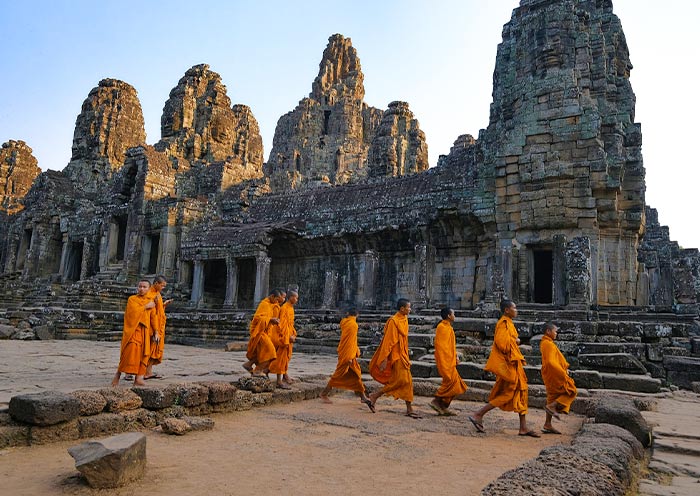
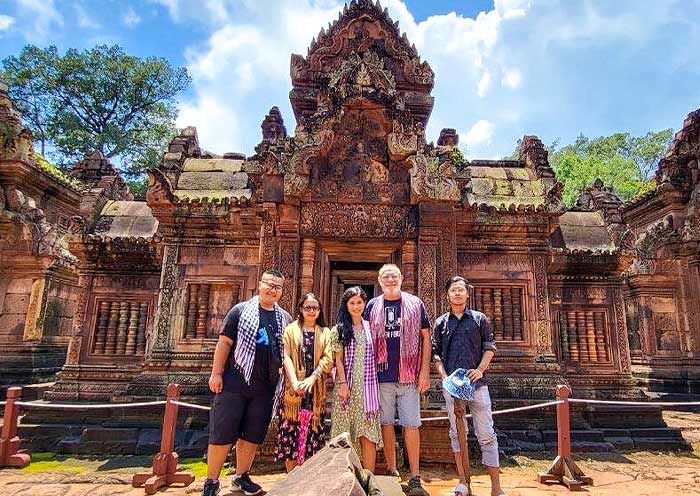
Off Season in Angkor Wat - Rainy Season from May to October
Weather and Temperature
- May to August: This period is characterized by high humidity and frequent rainfall. Temperatures range from 25-32°C (77-90°F), and humidity levels can be quite high. The rainy season reaches its peak from June to August, with heavy downpours and occasional thunderstorms. The rain often comes in short bursts, providing relief from the heat.
- September to October: Towards the end of the rainy season, rainfall starts to decrease, and temperatures begin to cool slightly.
Clothing Recommendation
- During the rainy season, it's essential to pack lightweight and quick-drying clothing. Opt for breathable fabrics like nylon or polyester that dry quickly in case of rain showers. Light, long-sleeved shirts and pants can provide protection against both rain and mosquitoes. Don't forget to bring a waterproof jacket or poncho and a compact umbrella.
- It's also a good idea to bring waterproof footwear or sandals that can withstand wet conditions, as some areas may become muddy or flooded during heavy rainfall.
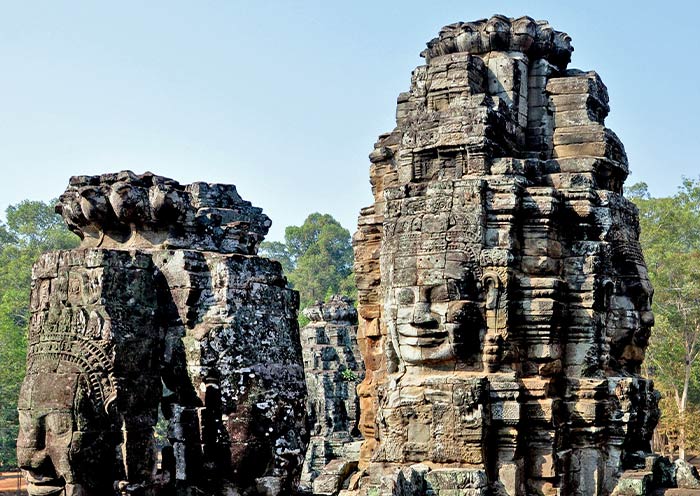
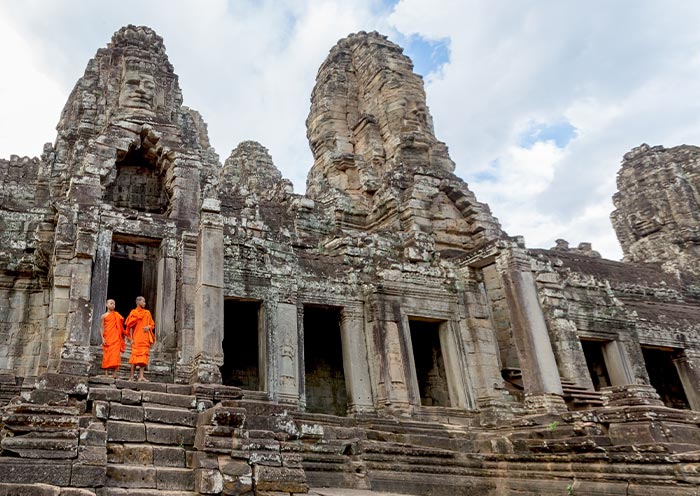
Essential Travel Tips
- Embrace the lush greenery and the unique ambiance created by the rain. The temples and surrounding landscapes can be particularly beautiful during this time, with vibrant vegetation and fewer visitors.
- Be prepared for rain showers by carrying a small, lightweight backpack with a waterproof cover to protect your belongings. Use resealable plastic bags to keep important items, such as electronics and documents, dry.
- Take advantage of the fewer crowds during the rainy season to explore the temples without the usual tourist influx. You may have a more intimate and peaceful experience.
- Be cautious when walking on slippery surfaces, such as wet stone steps or moss-covered areas. Use handrails where available and take your time to ensure your safety.
- Engage in indoor activities during heavy rain showers. Visit museums, art galleries, and other covered attractions in the nearby town of Siem Reap.
- Don't forget to bring insect repellent, as the rainy season can bring an increase in mosquitoes and other insects. Protect yourself from mosquito bites to prevent any potential illnesses.
It's important to note that despite the rainy season, visiting Angkor Wat can still be enjoyable, as the rain showers are often short-lived and the temples surrounded by lush greenery can offer a unique and atmospheric experience. However, it's advisable to come prepared with rain gear and plan indoor activities during heavy rainfall.
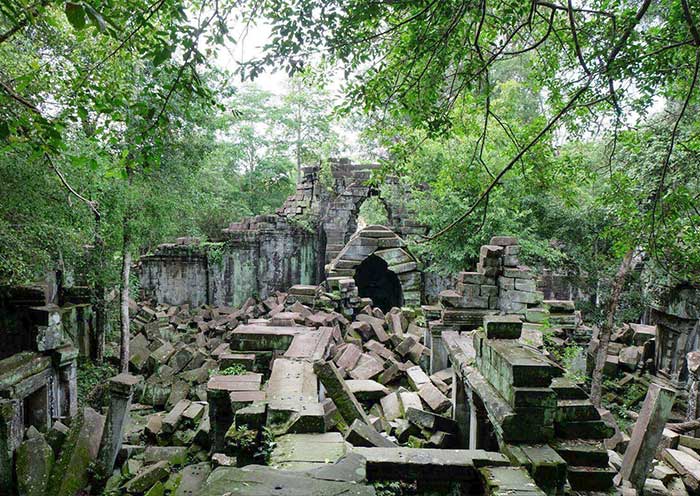
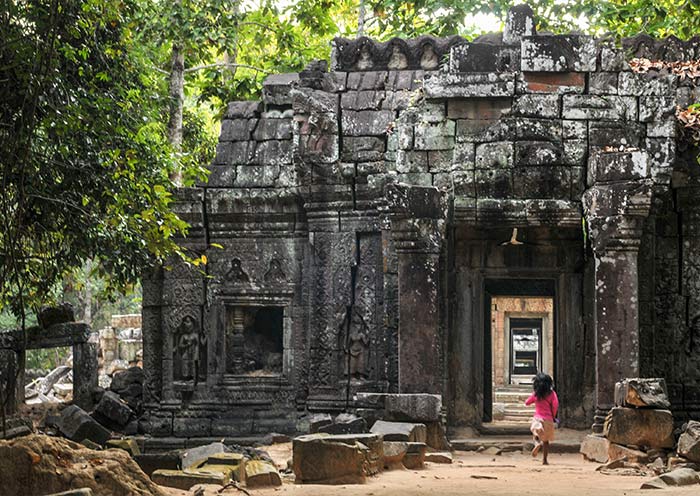
How to Plan a Angkor Wat in One Day?
If you have limited time and want to get a glimpse of the main highlights, a one-day visit can be sufficient. You can focus on the most iconic temples like Angkor Wat, Angkor Thom, Bayon, and Ta Prohm. However, keep in mind that you will have a relatively quick and condensed experience. Here is the detailed one-day Itinerary:
- Sunrise at Angkor Wat (1 hour, 5:30-6:30 AM): Wake up early and arrive at the temple complex before dawn to secure a good viewing spot. Watching the sunrise over Angkor Wat is a popular and breathtaking experience.
- Angkor Thom and Bayon Temple (3.5-4 hours): Proceed to Angkor Thom after breakfast. Spend time exploring the impressive Bayon Temple, known for its iconic stone faces. Take your time to wander through the other temples and structures within Angkor Thom, such as the Terrace of the Elephants and the Terrace of the Leper King.
- Ta Prohm (2 hours): After lunch, head to Ta Prohm, a temple renowned for its atmospheric setting of being partially engulfed by tree roots. This temple offers a unique and mystical experience, as nature intertwines with the ancient stone structures.
- Angkor Wat (2 hours): Take your time to admire the intricate carvings, explore the different galleries, and climb to the upper levels for panoramic views of the surrounding area.
Check more details in How to Plan a Trip to Angkor Wat

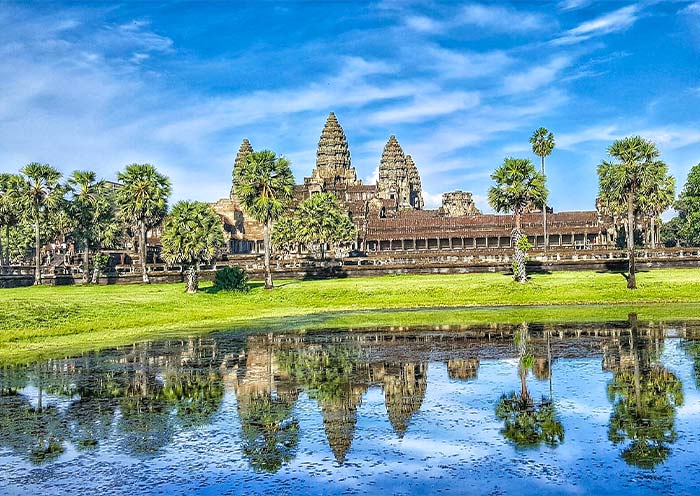
Travel with Asia Odyssey Travel (AOT) to Explore Angkor Wat, Cambodia
Unveil the mystique of Angkor Wat, one of the world's most captivating archaeological sites, with Asia Odyssey Travel as your trusted guide. Angkor Wat, nestled in the heart of Cambodia, enchants visitors with its awe-inspiring temples, ancient ruins, and profound historical significance. Let us take care of the details as we create an immersive and unforgettable travel experience just for you.
- Expertly Designed Itineraries: Our experienced team has crafted a selection of thoughtfully planned itineraries, ensuring you make the most of your time at Angkor Wat.
- Iconic Destinations: Explore the wonders of Angkor Archaeological Park, including the magnificent Angkor Wat temple, the enigmatic faces of Bayon, the jungle-clad ruins of Ta Prohm, and more.
- Tailored Experiences: Customize your Angkor Wat adventure to suit your preferences. Work closely with our travel experts to design a personalized itinerary that caters to your interests.
- Seamless Logistics: Sit back and relax as we handle all the logistical details, from flights and accommodations to transportation and tour guides. Our meticulous planning ensures a smooth and hassle-free journey, allowing you to fully immerse yourself in the wonders of Angkor Wat.
- 24/7 Support: Our dedicated team is available round-the-clock to offer assistance and support throughout your journey. From the moment you arrive until your departure, we are here to ensure your comfort and satisfaction.
Embark on an extraordinary adventure with Asia Odyssey Travel and unlock the timeless allure of Angkor Wat. Contact us today, and let our expertise and passion for travel guide you through this captivating UNESCO World Heritage site. Get ready to create cherished memories and experience the profound beauty and cultural heritage of Angkor Wat.
If you have any questions about this article, please contact us by submitting the following form and we'll immediately get back to you.


